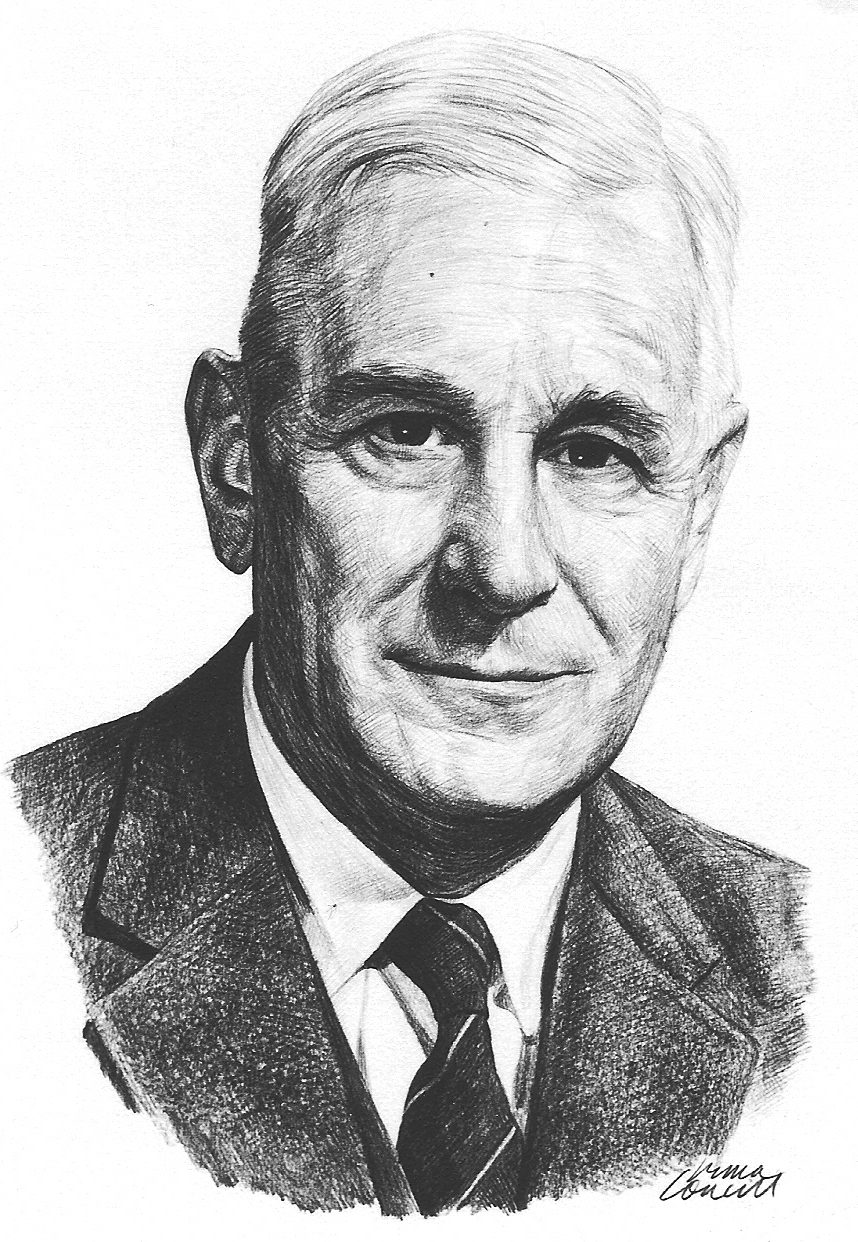Harold Anthony Oaks

Nickname: Doc
Birth Date: November 12, 1896
Birth Place: Hespeier, Ontario
Death Date: July 21, 1968
Year Inducted: 1974
Awards: DFC, The McKee Trophy
The professional daring of his aerial expeditions into uncharted regions, led others of his breed to colonize the unknown north and bring outstanding benefits to Canadian aviation
A Fighter Pilot
Harold Anthony (Doc) Oaks, D.F.C., B.A.Sc., was born in Hespeler, Ontario, on November 12, 1896. He was educated there and at Gait, Ontario. Oaks joined the Canadian Army in 1915 and served overseas until 1917 when he transferred to the Royal Flying Corps in England. He earned his pilot's wings and a promotion to Captain, served in France as a fighter pilot with No. 2 and no. 48 Squadrons, Royal Air Force (RAF), and was awarded the Distinguished Flying Cross (D.F.C.) for gallantry. He attended the University of Toronto where he graduated as a mining engineer in 1922. During the summer months he worked as an assistant geologist for Mackenzie River Oil Company.
Prospecting
He worked for the Canadian Geological Survey in the field for a year, then joined Hollinger Gold Mine, prospecting for minerals in northern Ontario and Quebec. In 1924 he was hired by the Ontario Provincial Air Service after receiving his Commercial Pilot's Licence, and flew forestry patrols out of Red Lake, Ontario. Following a year of prospecting for minerals in the same area, he organized and managed Patricia Airways and Exploration Company at Sioux Lookout, Ontario, in 1926, with air mechanic Sammy Tomlinson. Their main service lines were to the gold mining regions of Red Lake and Woman Lake north of Dryden, Ontario.
Western Canada Airways
Oaks envisioned the saving of time and money with low cost air transport of people and equipment over vast distances. He persuaded financier James A. Richardson, who had a similar vision, to form a new air line. In December 1926, Western Canada Airways was incorporated at Winnipeg, Manitoba. Oaks became general manager and sole pilot, flying a Fokker Universal from its base at Hudson, near Sioux Lookout. This company expanded rapidly, and became the first of Canada's major airline services.
A Sub-Zero Journey
Under Oaks' command, Western Canada Airways fulfilled a Canadian government contract in March of 1927 to airlift men and equipment from Cache Lake, Manitoba, to Fort Churchill, on Hudson Bay. Two pilots were hired for this difficult undertaking, the first of its kind ever attempted. Bernt Balchen and F.J. Stevenson flew in open cockpit aircraft through sub-zero temperatures and over alien ground, to make possible the creation of a new open port for Canada. In a month's time, they made twenty-seven round trips, transporting thirty tons (27,200 kg) of material and equipment and a crew of fourteen government engineers.
Fighting the Cold
It was at this time that Oaks and his air engineer, Al Cheesman, designed and built the first portable nose-hangar to enable mechanics to work on an aircraft's engine without freezing in the bitter cold. The small three-sided frame structure was equipped with a heater and a canvas flap which allowed the aircraft's nose to be inserted inside and kept relatively warm. Oaks was the first person to be awarded the Trans-Canada (McKee) Trophy. This was for the year 1927 in recognition of his work in organizing and operating air transport in northern Ontario, Manitoba and Saskatchewan.
A Rescue Mission
When Northern Aerial Mineral Exploration Limited (N.A.M.E.) was formed in 1928 to search for potential mining properties in areas far removed from civilization. Oaks accepted the post of General Manager and Director of Air Operations. During this period he was involved in a number of emergency flights. One of the most notable was in the company of T.M. ‘Pat' Reid, when they flew 1,600 miles (2,575 km) along the sub-Arctic shores of Hudson Bay through inclement weather to locate a party of 13 stranded prospectors and return them to base. It was the first mid-winter flight into the area by a private company.
Pioneering the North
As one of the earliest known pilot/geologists. Oaks foresaw immense financial potential locked in the far reaches of the Canadian Shield, accessible only by canoe through twisting waterways. In 1928 he based his operation at Fort McMurray, Alberta, and flew engineers and prospectors, with their supplies, into promising wilderness locations. His pioneer flights into unmapped territory spurred other aviators to penetrate still further into the Northwest Territories. He remained with this company until 1930, when he formed his own aviation concern, Oaks Airways Limited, operating from Sioux Lookout until 1935, and from Port Arthur, Ontario, until 1943. During this time he earned his Air Engineer's Licence.
A Lasting Legacy
In 1943 Oaks was associated with the Clark Ruse Aircraft Company at Halifax, Nova Scotia, and Central Aircraft Manufacturers at London, Ontario, as Manager of Flight Operations. From 1945 to 1953 he continued his work as a mining engineer at Port Arthur. In 1953 he became an aviation consultant to James A. Richardson and Company in Toronto. He died in Toronto on July 21, 1968.
"Doc" Oaks was a leader in pioneering air transport in Canada in the 1920's. He introduced the use of aircraft to fly men and equipment to outlying areas for mining and development work, at the same time helping two industries, aviation and mining, to thrive by working together.
Harold Anthony (Doc) Oaks was inducted as a Member of Canada's Aviation Hall of Fame in 1974 at a ceremony held in Edmonton, Alberta.
To return to the Inductee Page, please click here.
